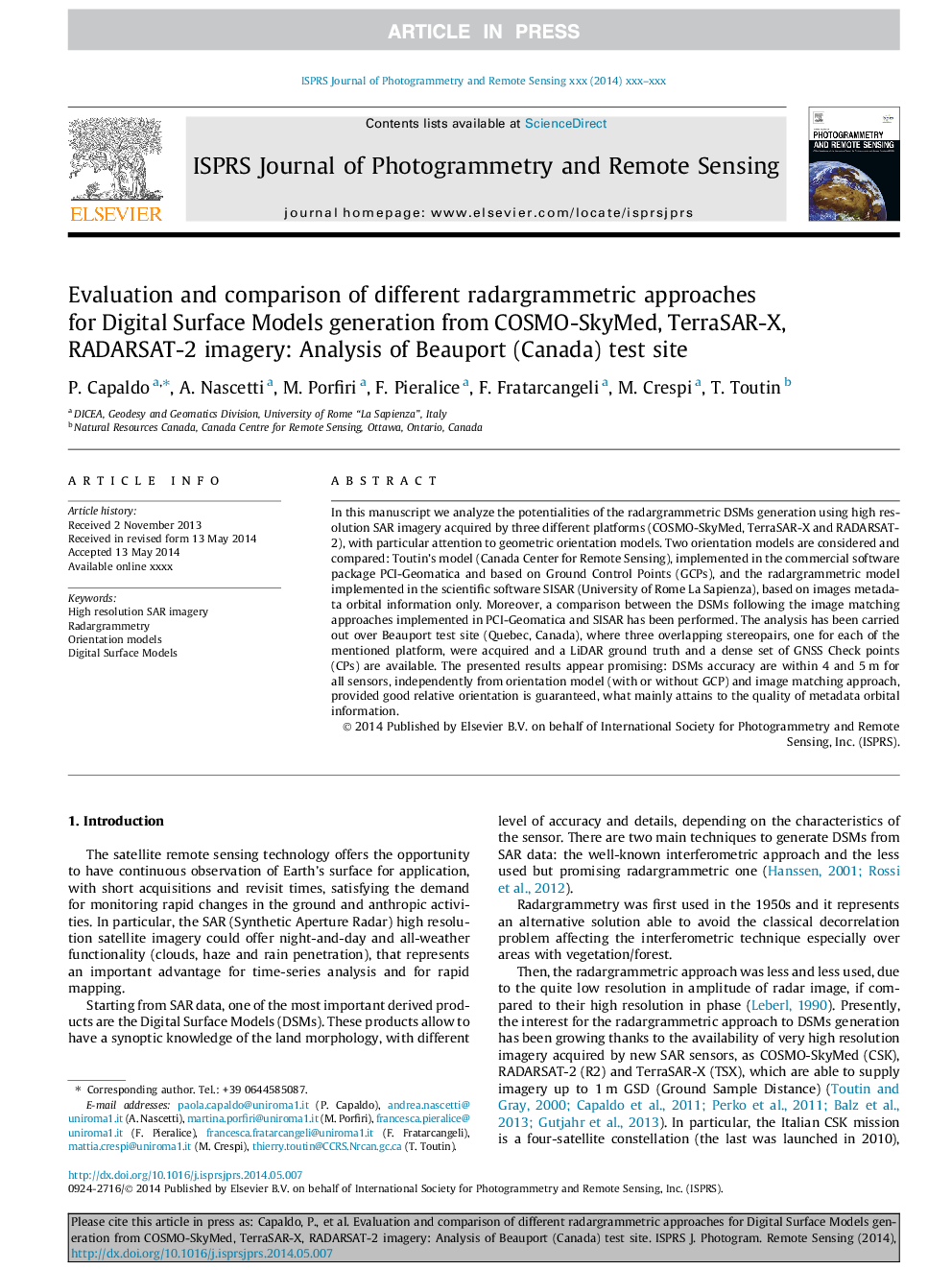| Article ID | Journal | Published Year | Pages | File Type |
|---|---|---|---|---|
| 6949532 | ISPRS Journal of Photogrammetry and Remote Sensing | 2015 | 11 Pages |
Abstract
In this manuscript we analyze the potentialities of the radargrammetric DSMs generation using high resolution SAR imagery acquired by three different platforms (COSMO-SkyMed, TerraSAR-X and RADARSAT-2), with particular attention to geometric orientation models. Two orientation models are considered and compared: Toutin's model (Canada Center for Remote Sensing), implemented in the commercial software package PCI-Geomatica and based on Ground Control Points (GCPs), and the radargrammetric model implemented in the scientific software SISAR (University of Rome La Sapienza), based on images metadata orbital information only. Moreover, a comparison between the DSMs following the image matching approaches implemented in PCI-Geomatica and SISAR has been performed. The analysis has been carried out over Beauport test site (Quebec, Canada), where three overlapping stereopairs, one for each of the mentioned platform, were acquired and a LiDAR ground truth and a dense set of GNSS Check points (CPs) are available. The presented results appear promising: DSMs accuracy are within 4 and 5Â m for all sensors, independently from orientation model (with or without GCP) and image matching approach, provided good relative orientation is guaranteed, what mainly attains to the quality of metadata orbital information.
Keywords
Related Topics
Physical Sciences and Engineering
Computer Science
Information Systems
Authors
P. Capaldo, A. Nascetti, M. Porfiri, F. Pieralice, F. Fratarcangeli, M. Crespi, T. Toutin,
